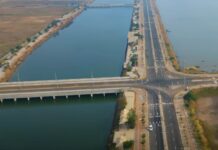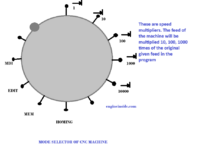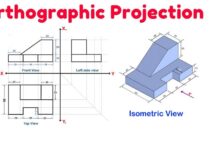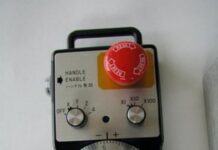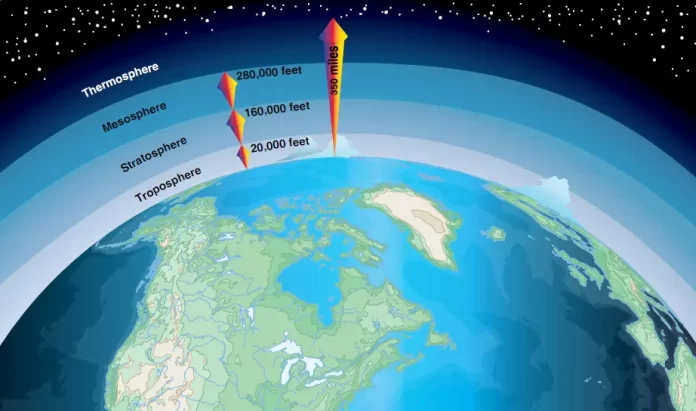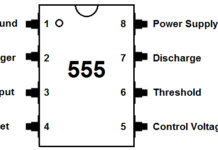Layers of atmosphere
Troposphere
- It is also known as living things sphere.
- It extends up to 18 kilometers from the Earth’s surface. Thickness varies from 8 kilometre at the poles to 18 kilometer at the equator.
- Tropopause separates troposphere from stratosphere.
- This layer accounts for practically the entire water vapor, all dust particles and most of the carbon dioxide contained in the atmosphere. Due to this all weather phenomena such as condensation, precipitations and storms occur in the troposphere only
Stratosphere
- The Stratosphere extends up to about 50 kilometers, where static was separates it from the Mesosphere.
- In this layer, the temperature increases with increase in height. This phenomenon is known as temperature inversion.
- The temperature rises in this layer from about minus 60 degrees Celsius at the tropopause to zero degrees Celsius ecstatic pause. The part of the stratosphere in which there is concentration of ozone is called ozonosphere. It absorbs ultraviolet radiation which is harmful for us.
- Stratosphere is free from dust particles and also from atmospheric turbulences hence, this layer is considered ideal for flying of jet aircrafts.
Mesosphere
- Mesosphere extends above the stratopause at a height of about 80 kilometer.
- In this layer that temperature decreases with height like the troposphere and it falls from about 0 degrees Celsius at its base to about minus 100 degrees Celsius at 80 kilometer height
- It is considered the coldest layer of the atmosphere. The upper limit of the Mesosphere is marked by Mesopause, a transitional layer separating it from ionosphere.
Ionosphere
- I know sphere is located above the mesosphere and extends up to about 600 kilometre. This layer is also called as ionosphere because it contains electrically charged ions that reflect the radio waves back to the earth, thus making radio communication possible.
- Absorption of solar radiation by ionized particles causes an increase in temperature with increasing height in the iron sphere.
- Due to large concentration of ionized particles in this layer the ionosphere acts as a protective layer against meteorites, that are burned in this layer.
Thermosphere
- The zone between the 85 and 600 kilometer above the surface of the earth is called thermosphere. In this layer, the temperature increases with increasing altitude. The upper limit of the thermosphere the thermopause is generally taken at an altitude of about 600 kilometer.
- The day temperature at 600 kilometer altitude exceed 1400 degrees , and night temperature remains about 225 degree Celsius.
- The upper part of the thermosphere contains only the lighter gases like helium and hydrogen
Exosphere and magnetosphere
- the outermost part of the atmosphere of the earth is called exosphere.
- This is zone of atmosphere extends beyond 640 kilometer.
- The upper limit of the exhaust fear is uncertain as this layer acts as a transitional layer between the earths atmosphere and the space. The outer part of the exhaust sphere is called magnetosphere.




